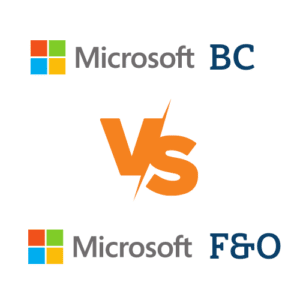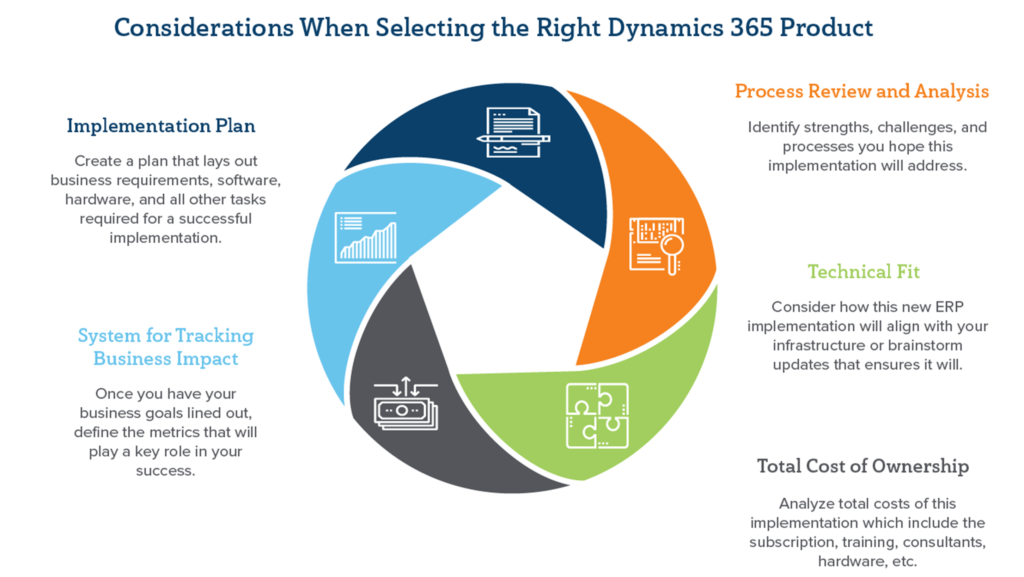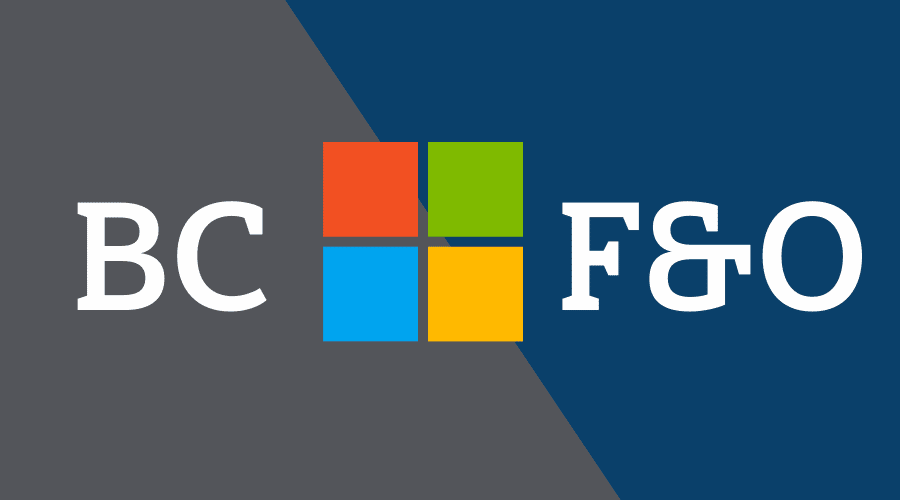Guidance for Selecting the Right Dynamics 365 Product
In this article we compare the Dynamics 365 ERP product family to help you select the best fit for your business. Read this before you buy.
Table of Content
Selecting the right Dynamics 365 product begins with a choice between its two ERP solutions.
There’s Business Central, or BC, Microsoft’s all-in-one, SMB-friendly ERP.
Then there’s the enterprise pick, Finance & Operations, or F&O, which adds advanced features and AI enhancements to the BC suite. It’s made to support large teams with complex financial and operational requirements.
On the surface, the choice seems simple. Small or medium-sized companies should go with Business Central. Large, multi-location enterprises should opt for F&O.
But, there’s more to it than that. Future plans, for one. Your business model. Regulatory requirements. Whether you manufacture products or deal with several different currencies.
Here, we’ll look at the features, functions, and target use cases of each ERP in the Dynamics 365 product family to help you find the best fit for your business. We’ll also discuss some key factors that can shape this decision.

We’ve already discussed what’s inside each ERP in the Dynamics 365 product family. You can read about D365’s key components & capabilities or get a closer look at Dynamic 365’s individual modules.
That said, here’s a quick look at each Dynamics ERP and who they’re designed for:
Dynamics 365 Business Central allows small-to-medium-sized businesses to manage finances, operations, sales, customer service, and more from one cloud-based platform. BC provides end-to-end visibility–allowing orgs to understand the health of their business at a glance. Integrations with Excel and Outlook streamline processes and communications and you can embed Power BI charts across the platform for intelligent insights.
Users can also add CRM modules to the base plan to provide advanced features to specific teams like sales, customer service, or HR. They can add Customer Insights or Power BI to bring richer insights into the platform. They can also incorporate ISV solutions like Velosio’s Advanced Projects for Business Central.
Business Central is the “natural” upgrade path for NAV and GP users. That is, if their business model hasn’t gone through any significant changes. Think–adding new locations, portfolio brands, or product lines.
While it does offer many advanced features out-of-the-box, plus tons of room for add-ons and customizations, growing orgs may bump up against capacity limits.
Dynamics 365 Finance comes with a suite of advanced features that don’t come standard with BC. AI insights, and embedded analytics to help teams maximize profitability, increase agility, and reduce operating costs. This option is designed for teams with 250+ employees and aims to help organizations make smarter decisions, redesign business processes faster, and drive growth.
Unlike Business Central, Finance is a full enterprise solution–capable of handling higher data and transaction volumes.
Dynamics 365 Supply Chain Management includes the same advanced features and enhancements you’ll find inside the Finance ERP. But you’ll also gain access to features that cover supply chain management processes. Think managing manufacturing processes down to the formula or streaming operational data from IoT devices.
Most AX users will end up opting for F&O, though whether they choose the Finance or Supply Chain Management version depends on whether things like procurement, manufacturing, or warehousing are critical parts of your business.
Here’s a Microsoft Dynamics product comparison: Dynamics AX to Finance & Operations that breaks down the new features and functionality you’ll find in F&O.
If you’re migrating from an external solution like SAP or NetSuite or your business has changed a lot since the last time you went shopping for an ERP, choosing the right Dynamics product might not be so straightforward.
Here are a few steps to help you narrow your search:


There’s a lot of overlap between the two platforms. They have a similar look and feel and integrate with the same modules and apps.
But, Dynamics F&O offers several UX enhancements you won’t find inside Business Central.
A lot of it has to do with the size and scale of your operations. D365 Finance is built for organizations that need to manage a lot of moving parts. We’re talking hundreds, even thousands, of employees, complex projects/financials, locations, currencies, etc.
By contrast, BC caters to single-location companies that aren’t dealing with the same challenges as large enterprises.
Sales rep Sam Miller puts it like this, “you want to look at the scale of functionality in single company vs. multi-company operations. Consider the effort that goes into internal collaboration and cooperation with external stakeholders and partners.
“F&O is a top-tier ERP designed to handle more users and transactions than BC. F&O also provides more out-of-the-box functionality around warehousing and manufacturing without requiring an add-on.” – Nick DiAngelo, Senior Consultant
Sreenath Reddy Girigari, Directory of Delivery says, “DF&O offers some advantages over Business Central. Think user-friendly design, ease-of-use and the ability to use PowerApps & Flow to optimize productivity. It also offers seamless integration with Office 365 and real-time intelligence embedded directly into dashboards.”

While budget is a factor, it’s not the most important element when it comes to selecting the best Dynamics 365 solution for your business.
Map out front and back-office activities and analyze them against the capabilities offered by each ERP solution.
Does Business Central meet most of your current needs? Are there gaps? If so, will you be able to cover them by adding one or two CRM modules? Or, do you need the advanced capabilities of F&O across several business functions?
“F&O is designed to work out-of-the-box with other Dynamics 365 components. It has deep integrations with CRM, HR, Talent, Customer Service, Marketing and other CRM offerings & add-ons. Plus, it covers the full range of traditional back-office processes.” – Sreenath Reddy Girigari, Director of Delivery
Sam Miller says, “the more sophisticated your operations, the more important automating/optimizing processes become. Think about how many manual processes you’re willing to include in your day-to-day operations. What risks, barriers, and extra costs are you taking on by not investing in an enterprise solution?”
He adds, “remember – an F&O implementation done right is a fantastic long-term solution. You can integrate way more lines of business and functionality into F&O than you can in BC.”
If you’re a smaller firm, you might think BC is the way to go. But F&O could be a better bet if you have advanced project management needs, deal with complicated supply chain operations, or specialize in professional services like accounting/consulting/etc.
A few things to think about:
It’s also important to choose the product that offers the most out-of-the-box features and functionalities that align with your business–both right now and in the future.
One of our senior analysts, Nick DiAngelo advises organizations to “go with the system that requires the least amount of modifications. Fewer modifications mean easier updates/upgrades later on.”
Organizations should also run the numbers to determine whether F&O will move them closer to their goals.
Sreepathy Nagarajan, Practice Director – D365 F&O recommends looking at the following factors to inform your decision: “growth projections, diversity of business offerings, data volume, and long-term plans for expansion.”
“Transaction volume, growth plans, and multi-company/country needs. These are just a few, of many, things that drive clients towards one solution or the other.” – Ben Bolte, PreSales
Essentially, you’ll want to make sure you end up with a solution that can scale and pivot along with your business. At the same time, you don’t want to go overboard and pay for a bunch of features you don’t need.

Choosing which “member” of the Dynamics 365 product family is right for your business is a big decision. It’s also the first of many big-impact decisions you’ll make throughout the D365 migration process.
Sure, things like business size, geographic location(s), service offerings, or the legacy system you’re starting from can help you settle on an ERP.
But the choice between Business Central and one of the F&Os depends on several factors. Those include business complexity, regulatory requirements, data volume, the list goes on.
Working with a partner that can help you make the right decision based on your current business requirements and growth strategy.
Then, from there, develop a strategy for making the most of your ERP features sets the stage for long-term success.
Velosio is an award-winning Microsoft Gold Partner with deep expertise across the entire Microsoft portfolio. That includes Dynamics 365 and many generations of on-prem predecessors like AX, NAV, and GP. You don’t have to do this alone. Learn how Velosio can help you achieve your organizations goals as an ISV Partner.
Talk to us about how Velosio can help you realize business value faster with end-to-end solutions and cloud services.
"*" indicates required fields